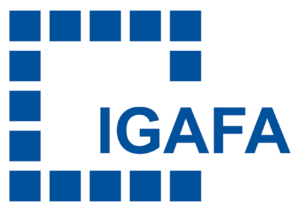| Summary |
Functional biointerfaces are part of the new collaborative research center SFB 1449 and the research building SupraFAB that forms a bridge between Biology, Chemistry and Physics. It also presents a perfect link to the Federal Institute of Material Research and Testing (BAM). In my presentation, I will focus on two functional biointerfaces: (i) universal surface coatings for biospecific cell binding and multivalent hybrid nanoparticles to block virus infections.
A new “adsorption-cross-linking” technology is presented to generate a highly dense polymer coating on various nonpolar substrates, including the most inert and low-energy surfaces of PDMS and PTFE. This prospective surface modification strategy is based on a tailored bifunctional amphiphilic block copolymer with benzophenone units as the hydrophobic anchor/chemical cross-linker and terminal azide groups for in situ postmodification. The resulting polymer brushes exhibited long-term and ultralow protein adsorption and cell adhesion benefiting from the high density and high hydration ability of polyglycerol blocks. The presented antifouling brushes provided a highly stable and robust bioinert background for biospecific adsorption of desired proteins and cells after secondary modification with bioactive ligands.
Blocking virus binding with host cells with binding decoys can inhibit virus infection at the entry step. Overcoming the heterogenicity of difference virus strains and developing broad-spectrum inhibitors has become an important task for the chemists and virologists. The virions of SARS-CoV-2 and Influenza A are nanoparticles around 100 nm, which can be targeted by different multivalent nanostructures. Herein, I present novel hybrid nanoparticles of different shapes that can efficiently block the binding of viruses to host cell surfaces.
Selected References
1. Nie, C.; Stadtmüller, M.; Parshad, B.; Wallert, M.; Kerkhoff, Y.; Bhatia, S.; Block, S.; Cheng, C.; Wolff, T.; Haag, R.; Heteromultivalent topology-matched nanostructures as potent and broad-spectrum influenza A virus inhibitors. Sci. Adv., 2021, 7, eabd3803.
2. Cheng, C.; Zhang, J.; Li, S.; Xia, Y.; Nie, C.; Shi, Z.; Cuellar-Camacho, J. L.; Ma, N.; Haag, R.; A water-processable and bioactive multivalent graphene nano-ink for highly flexible bio-electronic films and nanofibers. Adv. Mater., 2018, 30, 1705452.
3. Qi, Z.; Bharate, P.; Lai, C. H.; Ziem, B.; Böttcher, C.; Schulz, A.; Beckert, F.; Hatting, B.; Mülhaupt, R.; Seeberger, P. H.; Haag, R., Multivalency at Interfaces: Supramolecular Carbohydrate-Functionalized Graphene Derivatives for Bacterial Capture, Release, and Disinfection. Nano Lett. 2015, 15, 6051-6057.
4. Wei, Q.; Becherer, T.; Noeske, P.-L. M.; Grunwald, I.; Haag, R., A universal approach to crosslinked hierarchical polymer multilayers as stable and highly efficient antifouling coatings. Adv. Mater. 2014, 26, 2688–2693. |
